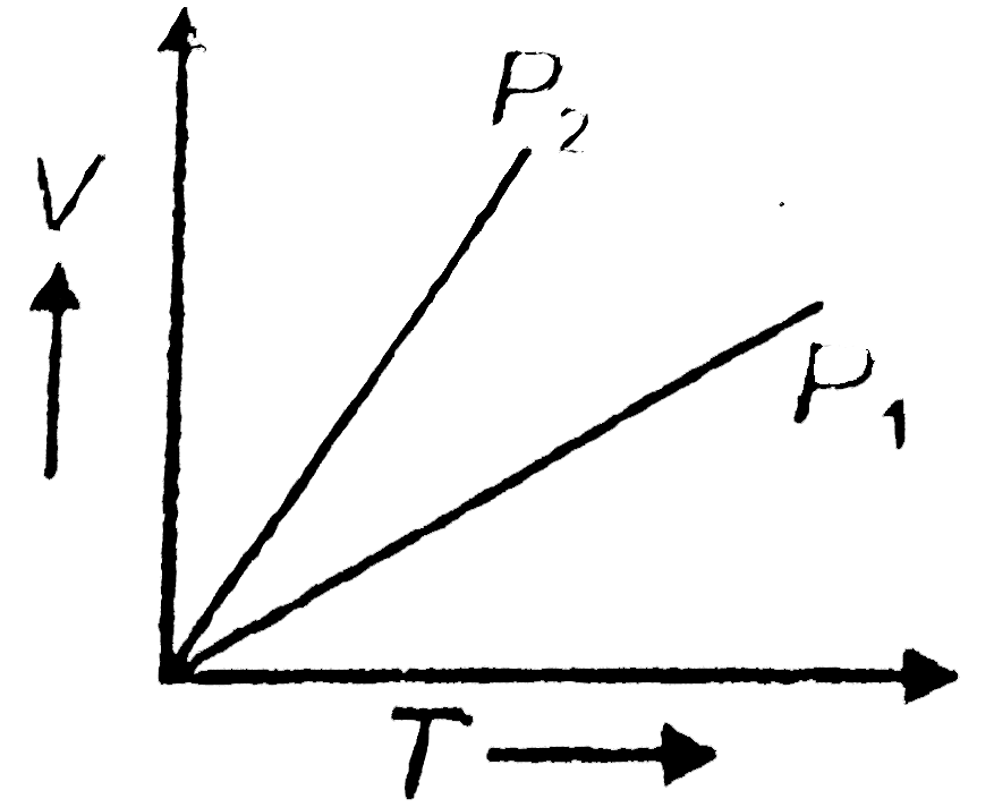Assertion: CP−CV=R for an ideal gas.
Reason: (∂E∂V)T=0 for an ideal gas.
If both (A) and (R) are correct and (R) is the correct explanation of (A).
If both (A) and (R) are correct, but (R) is not the correct explanation of (A).
If (A) is correct, but (R) is incorrect.
If (A) is incorrect, but (R) is correct.
The correct Answer is:A, B, C, D
To solve the given assertion and reason question, we will break it down step by step.
Step 1: Understand the Assertion
The assertion states that CP−CV=R for an ideal gas.
- Explanation:
- CP is the molar heat capacity at constant pressure.
- CV is the molar heat capacity at constant volume.
- R is the universal gas constant.
Step 2: Derive the Relationship
To derive the relationship CP−CV=R:
1. Start with the definition of enthalpy (H):
H=U+PV
where U is the internal energy.
2. The change in enthalpy at constant pressure is given by:
dH=nCPdT
3. The change in internal energy is given by:
dU=nCVdT
4. The differential form of enthalpy can also be expressed as:
dH=dU+d(PV)
5. From the ideal gas equation, we know:
PV=nRT⟹d(PV)=nRdT
6. Substitute dU and d(PV) into the enthalpy equation:
dH=nCVdT+nRdT
7. Equating the two expressions for dH:
nCPdT=nCVdT+nRdT
8. Dividing through by ndT (assuming dT≠0):
CP=CV+R
9. Rearranging gives:
CP−CV=R
Step 3: Understand the Reason
The reason states that (∂E∂V)T=0 for an ideal gas.
- Explanation:
- This means that the change in internal energy E with respect to volume V at constant temperature T is zero.
Step 4: Analyze the Reason
1. For an ideal gas, the internal energy U depends only on temperature, not on volume or pressure.
2. Therefore, at constant temperature, any change in volume does not affect the internal energy:
(∂U∂V)T=0
3. This implies that the internal energy remains constant with changes in volume at constant temperature.
Step 5: Conclusion
Both the assertion and reason are correct statements. However, they are not directly related to each other. The assertion discusses the relationship between heat capacities, while the reason discusses the behavior of internal energy with volume at constant temperature.
Final Answer
The correct answer is B: Both Assertion and Reason are correct, but Reason is not the correct explanation for Assertion.
---
The assertion states that CP−CV=R for an ideal gas.
- CP is the molar heat capacity at constant pressure.
- CV is the molar heat capacity at constant volume.
- R is the universal gas constant.
To derive the relationship CP−CV=R:
H=U+PV
where U is the internal energy.
dH=nCPdT
dU=nCVdT
dH=dU+d(PV)
PV=nRT⟹d(PV)=nRdT
dH=nCVdT+nRdT
nCPdT=nCVdT+nRdT
CP=CV+R
CP−CV=R
The reason states that (∂E∂V)T=0 for an ideal gas.
- This means that the change in internal energy E with respect to volume V at constant temperature T is zero.
1. For an ideal gas, the internal energy U depends only on temperature, not on volume or pressure.
2. Therefore, at constant temperature, any change in volume does not affect the internal energy:
(∂U∂V)T=0
3. This implies that the internal energy remains constant with changes in volume at constant temperature.
Both the assertion and reason are correct statements. However, they are not directly related to each other. The assertion discusses the relationship between heat capacities, while the reason discusses the behavior of internal energy with volume at constant temperature.
The correct answer is B: Both Assertion and Reason are correct, but Reason is not the correct explanation for Assertion.
Topper's Solved these Questions
- STATES OF MATTERBOOK - CENGAGE CHEMISTRY ENGLISHCHAPTER - STATES OF MATTEREXERCISE - Exercises (Integer)
10 Videos
- STATES OF MATTERBOOK - CENGAGE CHEMISTRY ENGLISHCHAPTER - STATES OF MATTEREXERCISE - Archives (Multiple Correct)
3 Videos
- STATES OF MATTERBOOK - CENGAGE CHEMISTRY ENGLISHCHAPTER - STATES OF MATTEREXERCISE - Exercises (Single Correct)
85 Videos
- SOME BASIC CONCEPTS AND MOLE CONCEPTBOOK - CENGAGE CHEMISTRY ENGLISHCHAPTER - SOME BASIC CONCEPTS AND MOLE CONCEPTEXERCISE - Archives Subjective
11 Videos
- STOICHIOMETRYBOOK - CENGAGE CHEMISTRY ENGLISHCHAPTER - STOICHIOMETRYEXERCISE - Archives Subjective
33 Videos
Similar Questions
CP−CV for an ideal gas is………….. .
View SolutionFind CpCv for monatomic ideal gas.
View SolutionFind CpCv for monatomic ideal gas.
View SolutionAssertion: Cp can be less than CV.
Reason: CpCV=R is valid only for ideal gases.
View SolutionAssertion : Compressibility factor for ideal gas is one.
Reason : For an ideal gas PV=nRT equation is obeyed.
View SolutionAssertion : The pressure of real gas is less than the pressure of ideal gas. Reason : Intermolecular forces of attraction in real gases are greater than in ideal gas.
View SolutionAssertion : The pressure of real gas is less than the pressure of ideal gas. Reason : Intermolecular forces of attraction in real gases are greater than in ideal gas.
View SolutionAssertion (A): The Joules -Thomon coefficient for an ideal gas is zero.
Reason (R ) : There are no intermlecular attactive forces in an ideal gas.
View SolutionAssertion (A): The Joules -Thomonson coefficient for an ideal gas is zero.
Reason (R ) : There are no intermlecular attactive forces in an ideal gas.
View SolutionFor V versus T curves at constant pressure P1andP2 for an ideal gas are shown in the figure given below

View Solution
